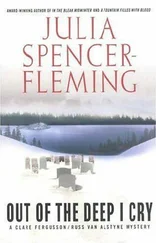“That’s all very well, Karen,” said the chief constable. “I admit that superficially we now have a decent case but the evidence is still circumstantial. If only Marshall would crack. Do you think there’s any chance of that?”
“What, after twenty-eight years?” Karen realized as she spoke that she probably sounded challenging, something she had been trying so hard to avoid. She couldn’t help it. What did Tomlinson expect, for God’s sake? There was something about his manner which always made it difficult for her to maintain professional distance, and with this case and her involvement in it she was finding it even more difficult.
“I don’t see why not, if he’s properly handled, of course. Everyone has a cracking point. Even the Richard Marshalls of this world, Karen.”
Tomlinson’s eyes were narrow. His use of her Christian name might have appeared on the surface to be conciliatory, a gesture of friendship and informality, but Karen merely found it patronizing. She had little doubt that her chief disliked her every bit as much as she disliked him. She thanked God that he was due to retire the following year because she did not know how long she was likely to survive having such a tricky relationship with her chief constable. Tomlinson had been a stopgap appointment, given the job largely because of his political expertise and his instinctive knack for avoiding controversy and maintaining the status quo.
Karen had adored his predecessor, John Mason, a visionary high flier who had reached the office of chief constable at the age of forty-two but had died, completely unexpectedly, of an aneurysm five years later. However, Mason’s fresh and liberal approach to policing had not always met with approval in high places. He had opened all manner of cans of worms which nobody quite knew how to deal with after his untimely death. Tomlinson, Karen was well aware, had been almost a safety measure. This was a man who stuck so rigidly to the book it was difficult to work out whether or not he ever had a truly original thought of his own. Tomlinson was not about taking risks, he wanted every case he embarked on to be copper-bottomed even though he knew perfectly well that was impossible, and particularly so with a case that had been around as long as this one and was already so high-profile.
Karen took a deep breath. This was about control, about remaining calm and reasoned. She had not made the best beginning. She had ground to regain.
“You’re absolutely right, sir,” she began, repeating her earlier response, one which she knew full well the chief constable never tired of hearing. “Some kind of confession would be the ideal, and that’s what we are all still hoping for. I have given instructions for Marshall to be interviewed continuously, within the rules of course,” she added hastily. “But I don’t think we can rely on this man breaking, I really don’t. He’s as cool as they come, sir. I think we have to be prepared to go with what we’ve already got, and it’s certainly a hell of a lot more than we ever had before.”
Tomlinson seemed mildly mollified, but still unconvinced.
“What we have, Karen, is a pile of very old bones,” he said. “And no possibility of getting any verifiable DNA from them, I understand.”
“I am confident that our identification is already quite solid enough without DNA verification,” countered Karen defiantly.
“Well, that’s as may be. But shouldn’t we at least wait until we get word from London confirming how long ago that body was dumped in the sea?”
Karen couldn’t believe her ears. “That would mean letting Marshall go, sir,” Karen replied, rather more sharply than she had intended. “It’ll be weeks before the isotopes of those bones can be established.”
The chief constable sniffed in a derisory fashion. “I don’t even know what a bloody isotope is,” he said, with a brief laugh in the direction of James Cromby-White. This called for the kind of chummy male-bonding response which Karen noticed, somewhat to her surprise, he didn’t get.
“It’s two or more species of a chemical element that have the same atomic number and nearly identical chemical behaviour but differ in atomic mass and physical properties, sir,” rattled off Karen, who’d looked it up in a reference book the previous afternoon. She actually understood the nature of an isotope or how its establishment actually determined age no more than the chief constable did, but she couldn’t resist the self-indulgence of supplying him with her recently gleaned textbook definition.
“Oh, very well,” he muttered, and Karen was pretty sure she heard Cromby-White struggling to stifle a giggle.
“You’re always in a hurry, aren’t you, Detective Superintendent?” the chief constable continued.
Karen made no comment. She did not think a reply was called for. The chief constable was obviously in one of his obstructive moods, which was pretty much true to form, she reckoned.
“Did it not occur to you that it might be better to wait until we had all our cards in our hand before arresting Marshall?” he asked crisply.
“I considered that we had quite enough evidence already, sir, and I still believe that,” she answered. “The media were already speculating about the identity of the recovered remains and I didn’t want to give Marshall the opportunity to do a disappearing act.”
The CC grunted again. “What if it turns out that the body was only dumped in the sea ten years ago? We’ve no way of telling so far, have we? What then?”
Karen gritted her teeth. “I don’t think that’s going to happen, sir,” she persisted. “Don’t forget we also have the watch. And I consider that to be quite conclusive—”
“Ah yes, the watch,” Tomlinson interrupted, waving a hand dismissively. “A watch that could have been dropped overboard independently of the body. Nothing conclusive about it, surely, Karen? A watch that, in my opinion, I’m afraid we have yet to prove absolutely belonged to Clara Marshall.”
“Well, I think we have already done that, sir,” said Karen, forcing herself to be patient, not her foremost quality. She was, she knew, in danger of losing it. Help came from a corner she had always previously regarded as unlikely.
“I’m pretty much content with the identification as it stands, actually,” interrupted James Cromby-White suddenly. “We have a precedent with the records of a Rolex watch being used to identify a murder victim. That alone, I think, would be enough. And yes, if you accept that the watch was Clara Marshall’s, and the sale of it from that dealer in Inverness does, I feel, establish that beyond any reasonable doubt, then there has to have been one hell of a lot of coincidences for those remains to be of anybody but her. I think even the lowliest hack lawyer could convince a jury of that one. With or without any further verification, it is my opinion that we do probably already have enough to go ahead.”
Karen shot the chief prosecutor a grateful look. He responded with a small shake of his head.
“Don’t run away with the idea that I’m ecstatic about this case, Karen,” he said. “But I do think we have one at last.”
“Well, it’s your call, ultimately, James,” said Tomlinson, who liked nothing better than passing the buck. “Are you really happy to go with it?”
“I don’t think happy is quite the word, Harry. It’s a quantum leap from accepting that the remains found in that wartime wreck are those of Clara Marshall to convicting her killer. But we do know Richard Marshall had the means, we do know he went out in his boat at the appropriate time, and we have all that other old circumstantial evidence against him including the lies he was continually caught out in and the fact that almost all of his wife’s clothes and belongings were found at their house. And of course, most damning of all, certainly until these remains were found, no word of his wife or children for almost thirty years.”
Читать дальше












